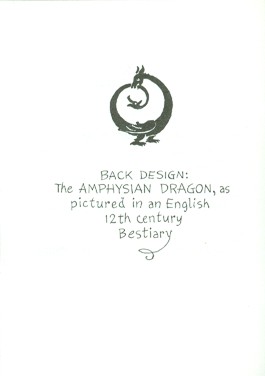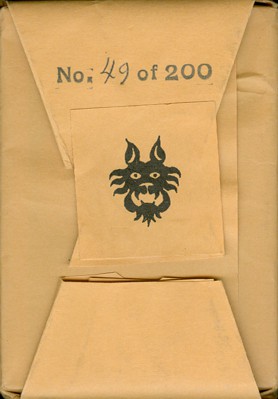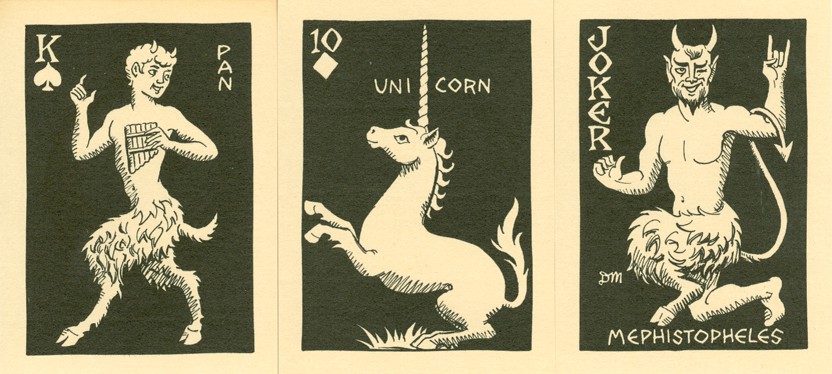DICK MARTIN
-02-
THE
"MYTHOLOGICAL
ZOO"
-A Collection of FABULOUS BEASTS-
The deck was published in 1971 in two separate editions. This
is the hand colored version, published in a limited, numbered and signed edition
of 100 copies only. It comes with an explicative booklet, made in the same way
as that of his first deck, but with some more pages. Because there's not much
known about Dick Martin and his interest in playing cards and history, we'll let
Dick Martin explain how he came to create this deck. In the foreword of the
booklet he writes:
"Since the dawn of history man has been fascinated by animals. In ancient
times he endowed them with magical significance; they were objects of his fear,
his love and even his worship. And when man had exhausted the possibilities of
all known species, he invented new ones. Thus were born the Griffin and the
Unicorn and all the other Fabulous Beasts of mythology.
Most of these fanciful animals were hybrids, or combinations of beast, bird and
fish. Ancient manmade many of his gods in his own image too, of course; and
eventual amalgamation of man-god and beast-god was inevitable - producing some
magnificently fantastic creatures. All these semi-human deities can be
classified as fabulous beasts and placed, along with the Mermaid and the
Centaur, in our "Mythological Zoo".
Early in my researches i found that there were far more of these strange and
wonderful creatures than could be crowded into a deck of fifty-two cards (In the
various Eastern religious pantheons, for instance, there must be more than a
hundred different man-animal gods). Selection was necessary, so the most
representative and varied examples were chosen.
All the fabulous beasts I have depicted are "authentic". That is, all
their anatomical details are carefully reproduced from old engravings, and
photographs of ancient sculptures. In cases where two or more different
representations were found, the most fantastic one was chosen - of course!
But however varied the imaginary creatures in this collection may appear, they
all have one thing in common: men once believed they really existed. Indeed, a
few of them are still believed in to this day."
The booklet also gives information about each of these
fabulous beasts, so we've also quoted Dick's information about each card.
Today doing research has become much easier. A lot of
information has been digitalized and museums or libraries have put their
collections on line. Of course there's also Wikipedia and other encyclopedic
sites. In 1971 one still had to go to the library and read the actual books. So
Dick added a bibliography in his booklet: Metropolitan Museum of Art,
"Animals that never were (1948)"; Peter Lum, "Fabulous beasts
(1951)"; Larousse, "Encyclopedia of Mythology (1959) and World
Mythology (1965)"; Robin Palmer, "Dragons, Unicorns and other Magical
Beasts (1966)".
SPADES= ancient Greece and Rome
HEARTS= ancient Egypt and
the Near East |
CLUBS=India and the Far East
DIAMONDS=medieval Europe and the
New World |
|
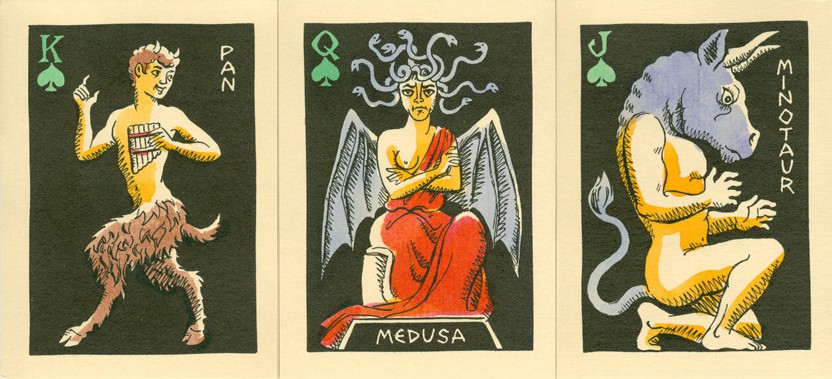
|
|
PAN - The
most well-known of the Satyrs who dwelt in the woodlands of Greece. This
goat-boy was the god of farms and pastures as well, where his pipings
might be heard in summer nights.
|
MEDUSA -
The snaky-locked chief of the Gorgons, whose gaze could turn men to
stone. She was slain by Perseus, who was careful to look only on her
reflection in his shield.
|
THE
MINOTAUR - This bull-headed monster was the terror of Crete. It was the
task of Theseus to seek him out in his labyrinth, destroy him and rescue
the fair Ariadne. |
|
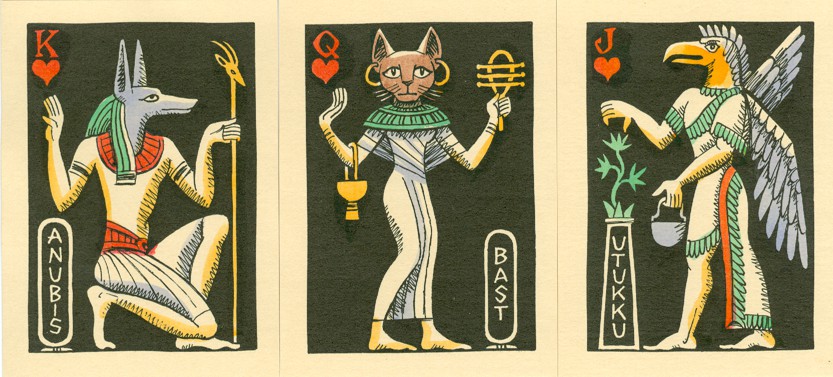
|
|
ANUBIS - A
much respected god: the jackal-headed Conductor of Souls to the Egyptian
Afterworld. |
BAST- -
The cat-headed goddess of the Temple of Bubastis, in whose name all the
household cats of Egypt were venerated as sacred. |
UTUKKU -
This Assyrian genie with eagle's head and wings had a special duty: he
was supposed to sprinkle the sacred Tree of Life with water. |
Click the Ace to see the pip
cards of that suit.
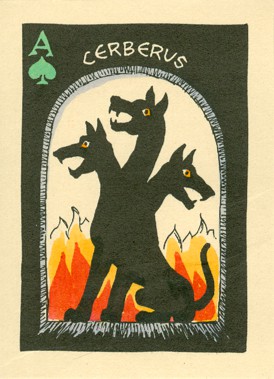 |
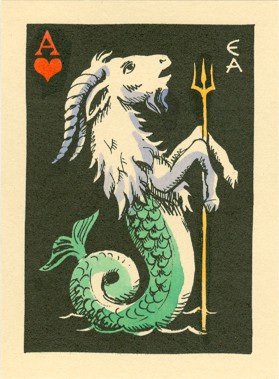
|
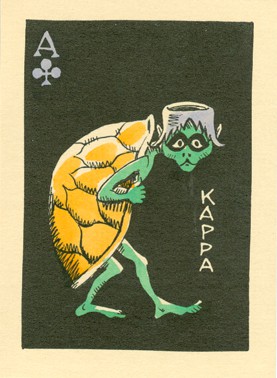
|
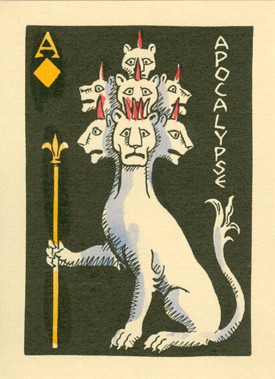
|
|
CERBERUS - A
three-headed dog who, according to Roman mythology, guarded the entrance of
the infernal regions. |
EA - The
goat-fish of Babylon. He was the exact counterpart of the Western Zodiac
figure, Capricorn. |
THE KAPPA -
This tiny, monkey-like Japanese goblin is full of mischief, but is known
to repay kindnesses. He sometimes wears a tortoise shell, and his
hollowed-out head is full of water, the source of his great strength. |
THE BEAST OF
THE APOCALYPSE - The "blasphemous beast" with seven heads and
ten horns, so literally depicted throughout the Middle Ages. |
 |
|
VISHNU -
The Indian god known as "The Preserver". Of his many avatars,
or earth-incarnations, his appearance as The Tortoise is the most
astonishing. |
NAGINI -
Queen of the underground realm of the Nagas, or snake-gods. They are
respected throughout India as guardians of the earth's treasures. |
GANESHA -
The benevolent elephant-headed god of India, and the symbol of good
luck. His elephant head signifies great strength and wisdom, and his
four arms offer a "helping hand" to everyone. |
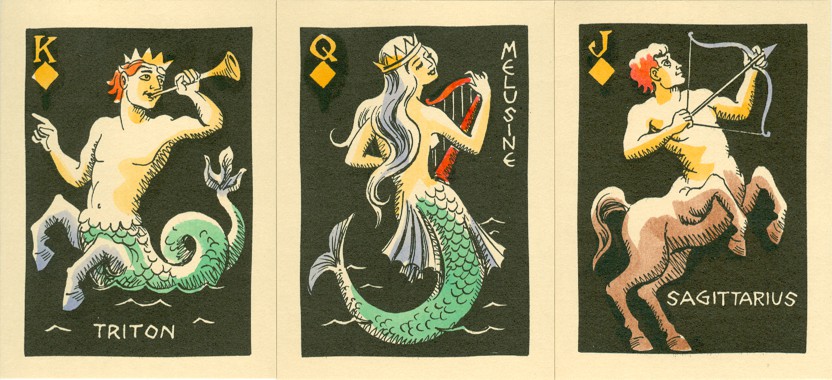 |
|
TRITON -
this fish-god was supposed to be the son of Neptune. He was respected by
Medieval sailors as the Spirit of the Mediterranean Sea. |
MELUSINE -
The most famous of the fairies of French romance, this mermaid was
revered as the ancestor and founder of the house of Lusignan. |
SAGITTARIUS
- Chief of the Sagittary, or centaurs of Medieval romance. He is the
ninth sign of the Zodiac. |
|
Because
every card was used to portray a beast, the ace of spades is not special
and doesn't mention the CPCC or the time span of 1951 - 1971. The CPCC
is only mentioned on the title card, again dated in Roman numerals. |
MEPHISTOPHELES
- His name comes from a Greek phrase meaning "not loving the
light". But whether he is known as Satan, Lucifer, or Old Nick, his
hoof, horns and tail proclaim him our Old Enemy. |
|

|
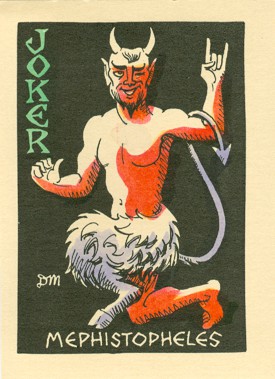
|
This edition comes in a two piece, solid carton, box.
|
front |
back |
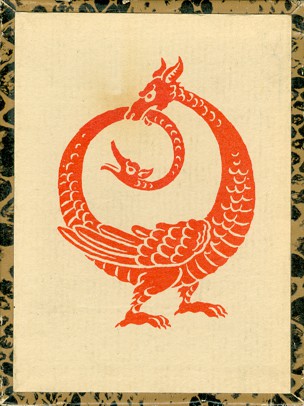 |
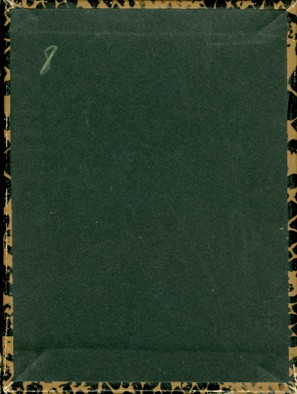
|
The coloured edition came with the same
booklet as the uncoloured version.
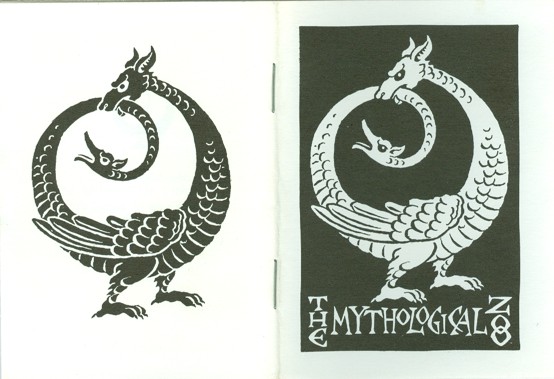
-01- -02-
-03-
ARTHOME













